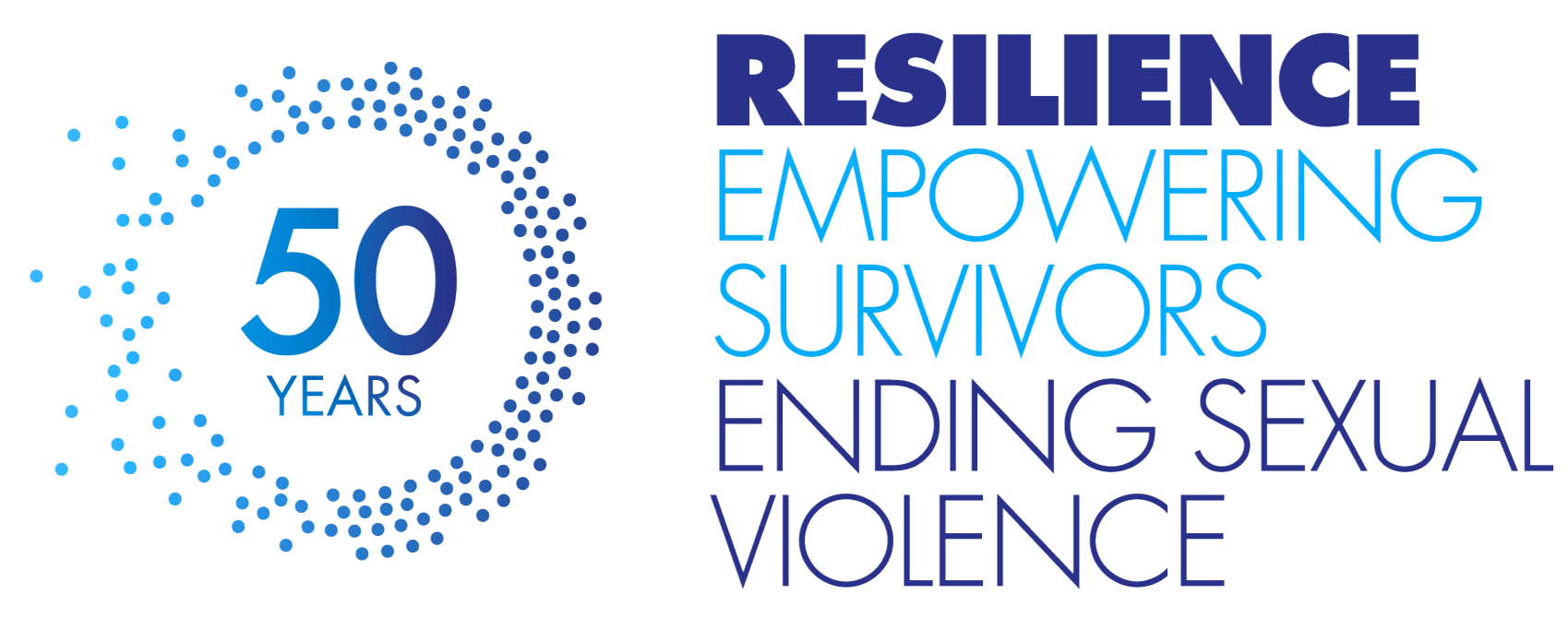Kate Lawler is the Director of the Pathways Program at Swedish Hospital now part of NorthShore. The Pathways Program was developed to strengthen the hospital’s ability to identify and assist patients who are survivors of interpersonal violence. Pathways has served more than 1,800 survivors of domestic violence, sexual assault, and human trafficking since 2015. Resilience is proud to partner with Swedish Hospital.
Continue to read our interview with Kate.

The Pathways Program has just completed our sixth year here at Swedish Hospital. We launched the program with the goal of increasing the capacity of the healthcare system to connect with patients and staff who are impacted by domestic violence, human trafficking, and sexual assault. We nurture a culture of awareness, train staff to recognize and respond to these forms of harm, and connect survivors with services in the community. We also offer outpatient medical, dental and mental health care to survivors referred by our domestic violence and human trafficking partner agencies. Since the beginning, community partners including Resilience have had a key role in shaping the program.
Can you tell me a little bit about what your day to day looks like in this position?
What I love about my job is that I have the opportunity to impact systems change from the frontlines where I see the everyday realities that survivors face when trying to access health care. I also see the cumulative toll on the providers and staff who provide this care. Some of the outward facing roles that I play are representing Swedish on various committees and task forces; engaging with technical assistance and evaluation teams; and collaborating with our community partners. My inward-facing roles include supervising staff, training providers, managing grants, and guiding the development and operations of the program. A new content area we have been focusing on over the past couple years has been head injury and strangulation in the context of domestic violence and sexual assault. We are working with some outside researchers as well as some of our residents to look at our data and find ways to improve our awareness, education and care pathways.
How do Pathways and Resilience work together?
Our Sexual Assault Nurse Examiner (SANE) program comes within the embrace of our Pathways Program while maintaining its separate nursing structure. Given that domestic violence, human trafficking and sexual assault are overlapping and interconnected, we try to avoid silos while also maintaining clarity of roles. When a sexual assault survivor presents to the Emergency Department, the first call the nurses make is to Resilience for medical and legal advocacy. Pathways usually gets involved later if the patient is interested in domestic violence or human trafficking services. Pathways also refers a lot of survivors to Resilience’s counseling program, for example if a patient discloses sexual assault or abuse that happened in the past.
On the Pathways website, there is a quote from you, “We are building this program on the wisdom of survivors who know best how a health care system can make them feel welcome, safe and supported.” For hospitals that don’t have a program like Pathways, what is something that they can do to create an environment that survivors feel safer and more supported in?
If I had to sum it up in a few words they would be awareness and leadership buy-in. Awareness of how common unsafe relationships are. Awareness of the impact that the stress and constant vigilance of unsafe relationships has on our health. Awareness of how the health care system can replicate power dynamics that will make someone who has been in an unhealthy relationship feel unsafe. Awareness of all the good we can do when we equip our health care system to provide survivors with information and choices and trust them to decide what is best. At Swedish, we have been able to count on leadership buy-in and a consistent message from our executive team that this culture of awareness is simply part of who we are. The Swedish Hospital Foundation makes this commitment a reality by providing and raising funding for the program. Now that Swedish is part of NorthShore we are excited about the opportunity and invitation to expand.
Resilience and Pathways are both very survivor-centered. Why is that important to Pathways?
Each survivor’s experience is unique and what feels healing or harmful varies from person to person and situation to situation. The only approach that puts the survivor in the driver’s seat is to provide information and options and let the survivor’s voice and choice guide the path forward. We know that only a small percentage of sexual assault survivors will come to a hospital. For those who do, the hospital is likely one of the first service providers that they are going to connect with. When we are survivor-centered we set the tone of whether connecting with service providers is safe and healing or whether it is further traumatizing and harmful. We want survivors to feel that even if no other measure of justice is formally achieved, here they felt believed and some of the agency that was taken away from them was restored through our care.
Swedish is a partner on Chicago’s multidisciplinary team along with Resilience, Chicago Police Department, Cook County State’s Attorney and other service providers. How does this interdisciplinary approach improve how systems are able to support survivors?
What has really struck me about the multidisciplinary team is that each discipline has become aware of how our window of involvement fits into the unfolding response that survivors experience when they come forward following a sexual assault. We each have our little snapshot and when you sit down with the multidisciplinary team, you start to see the whole movie from the survivor’s perspective. Even though each of our roles can feel disconnected because we perform them at different times and places – the hospital, the police station, an advocacy organization, the detective unit or the state’s attorney’s office – they are all interconnected in how they relate to each other and how they impact the survivor’s experience and the final outcome.
What are your hopes for the future of Pathways and Resilience and the work that we both do? What are you looking forward to?
I am looking forward to having the Resilience advocates back in the hospital. I’m looking forward to a time when we can step back and reflect together on what we have just been through. Over the past year we’ve been like those frogs in the pot with the heat gradually increasing and we are now accustomed to a very high temperature of stress, grief and uncertainty. Resilience has been teaching us about the neuro–biology of trauma for years. As we reflect on our experience of COVID – this prolonged traumatic event – we may have ears to hear that material in new ways. I also hope we can build even more safeguards for our staff against vicarious trauma, burnout and compassion fatigue. I look forward to stopping and celebrating the resilience that we have witnessed in ourselves, our patients and each other — and for that celebration not to be a Zoom call!
